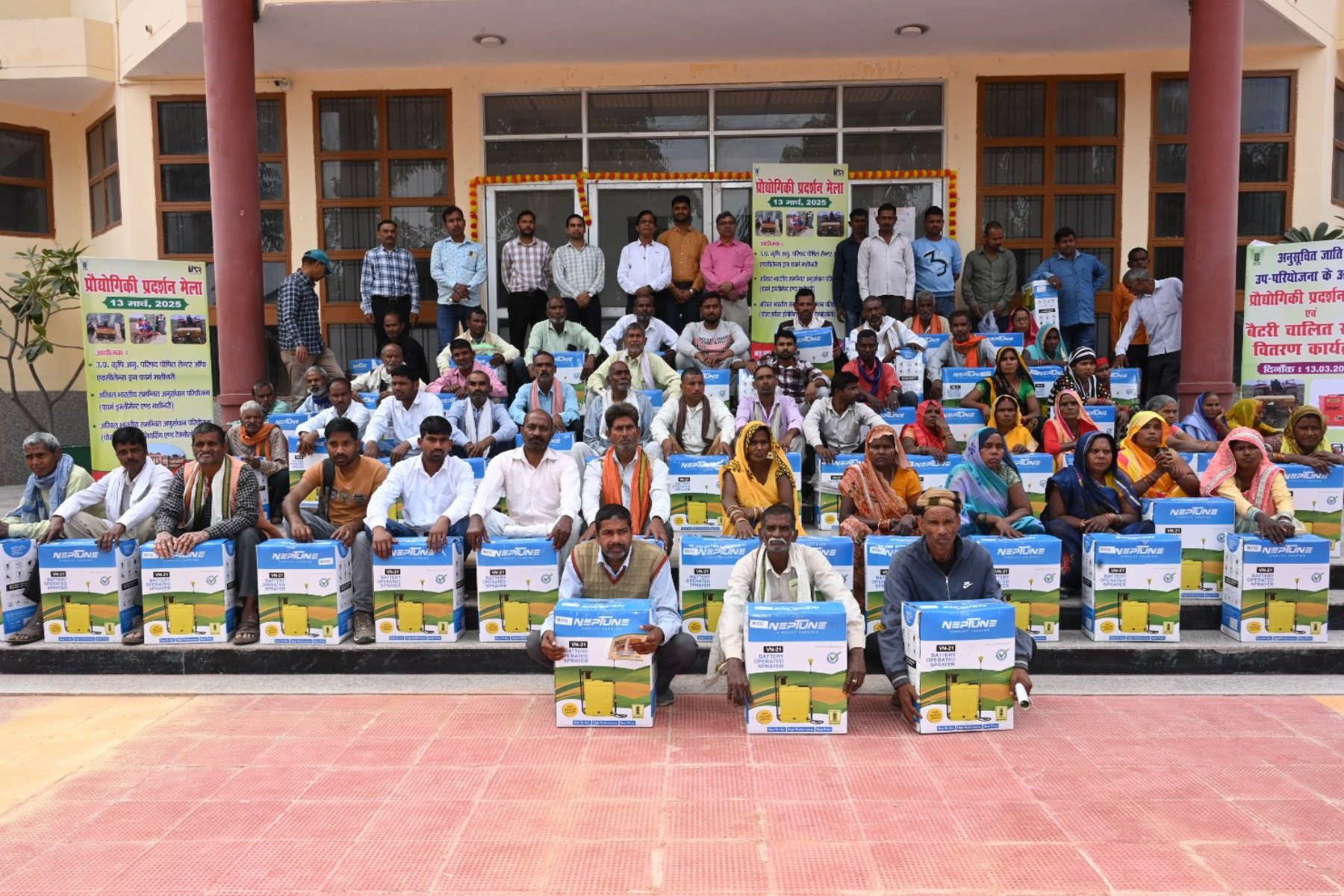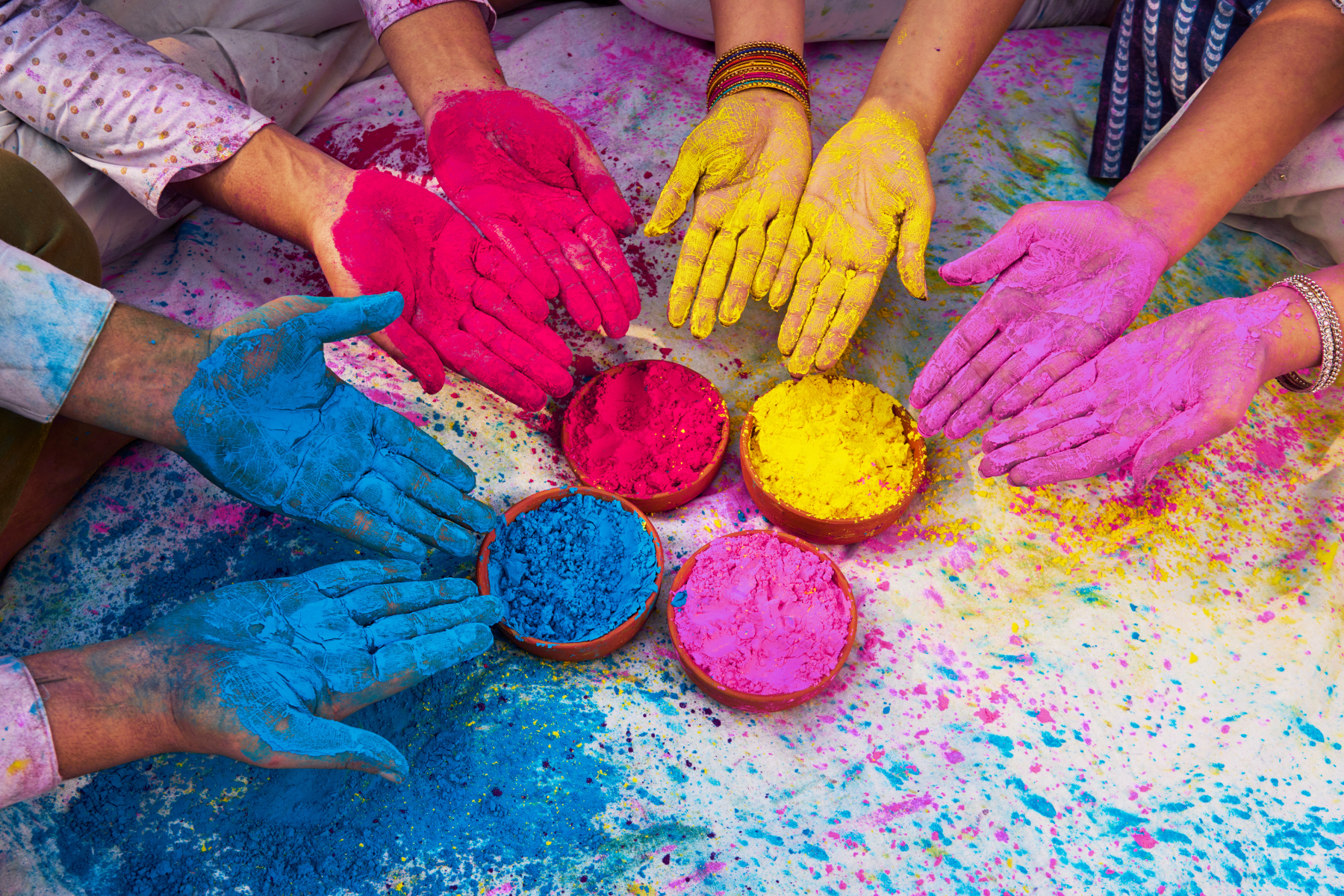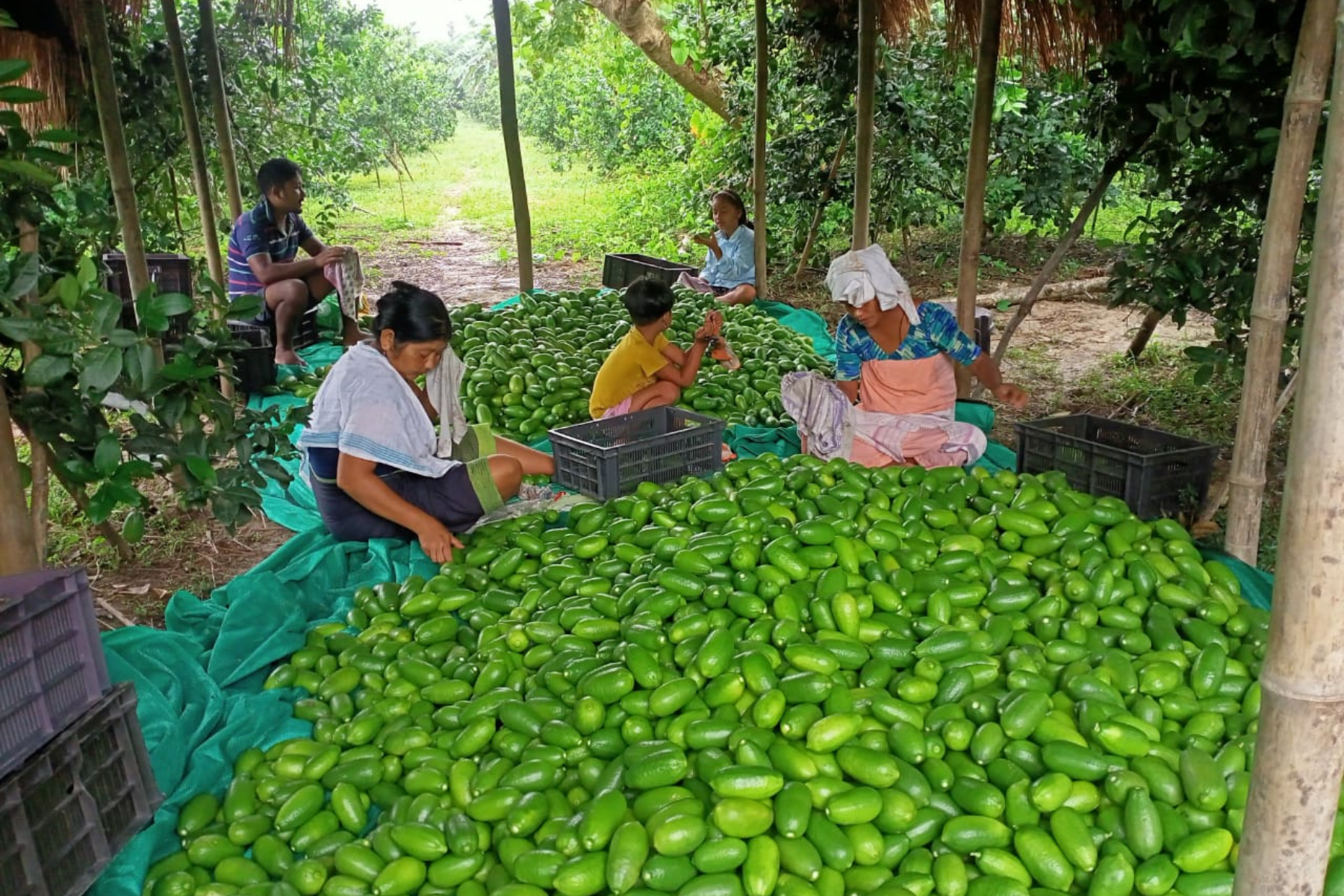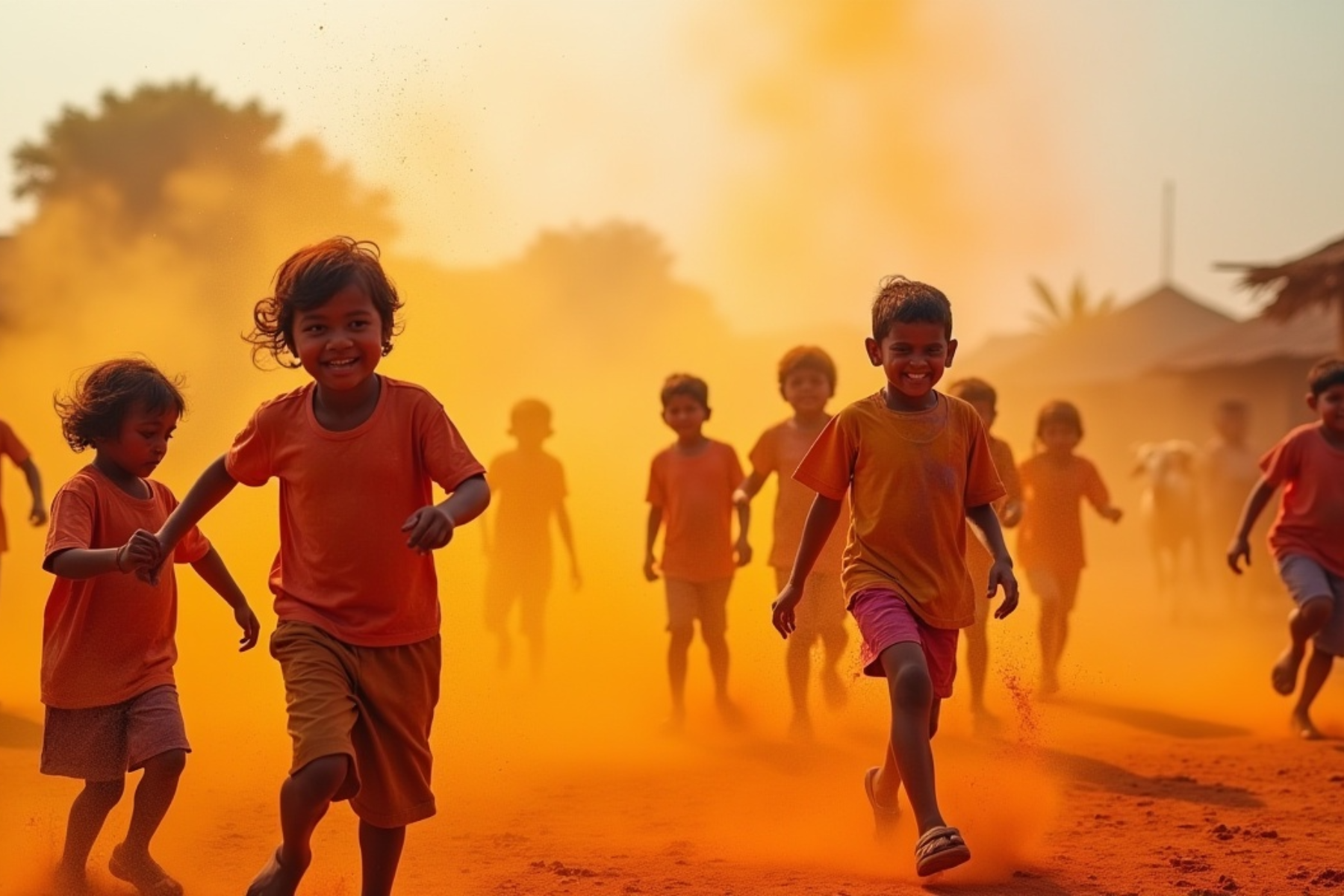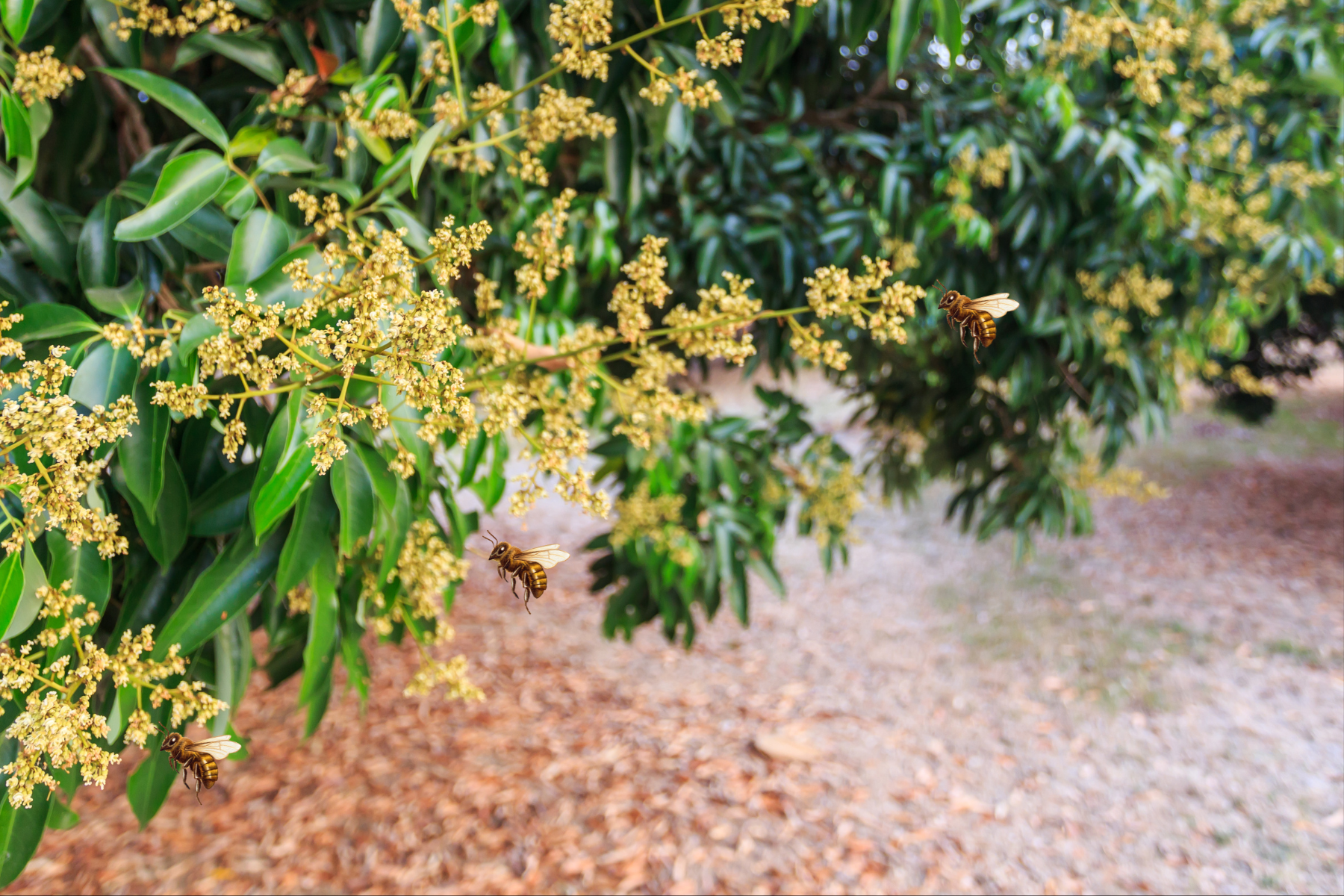Badarka (Unnao), Uttar Pradesh
Arti Devi and her four companions are busy from morning till late evening getting ready for Holi. They are making gulal (coloured powder) for the spring festival by extracting colours from vegetables, flowers and fruits.
The space outside Arti Devi’s home in Badraka village, Unnao district, is a fever of activity as they have to meet the target of making and packing two quintals of colour. One quintal equals 100 kilograms.
“We started the Chanda Mahila Self Help Group in 2020. That year, there was a Global Investors meeting held in the district to encourage and help entrepreneurs. Our SHG had put up a stall selling Holi colours in which we had used chemicals,” Arti Devi told Gaon Connection.
“Apoorva Dubey, the current district magistrate of Unnao, visited our stall and advised us to make Holi colours that were safe and not harmful to the skin and the environment,” she said. It was after this that the samooh decided to make natural and herbal products using flowers and vegetables.
Also Read: Holi festivities: Toxins in colours can be deadly — here are some ways to play safe
Beetroots, spinach, marigold flowers, etc. are all used now to make the natural colours for Holi, Arti Devi explained. The 33-year-old SHG member was abandoned by her husband and she is single-handedly raising her three children. She rallied around a few other women from nearby villages and started the SHG two years ago.

The women aremaking gulal (coloured powder) for the spring festival by extracting colours from vegetables, flowers and fruits.
The women are working on this initiative under the National Rural Livelihood Mission. “We encourage women to create business opportunities during festivals and special occasions. And, are constantly on the lookout for new venues of livelihood for them,” Ashok Kumar, the district mission manager, told Gaon Connection.
“Since this is the first time we are making colours from natural produce, we set a target of two quintals of gulal for the Chanda Mahila Self Help Group,” Ashok Kumar added.
Also Read: All set for Holi: In Vrindavan, these women are busy making herbal gulal made of flowers
Herbal colours for Holi
“It was a challenge to switch to extracting colours from the vegetables and flowers to make the gulal, but we managed to do it,” said Arti Devi. So for the first time since they set up the SHG, they are making the natural colours from vegetables, flowers and fruits.

Beetroots, spinach, marigold flowers, etc. are all used now to make the natural colours for Holi
“We first wash the natural vegetables, fruits and flowers well and then boil them in water till the colours leach out. We allow the water to cool and then add arrowroot into it, then a bit of refined oil and then put it out into the sun to dry,” she explained. “Once it is dried completely, we sieve it and soon the colours are ready to be packed and sold,” she added.
“To make one kilogram of yellow gulal, we use one kg of arrowroot, 1.5 kgs of marigold flowers and 10 millilitres of refined oil. To make one kg of the pink gulal, we require two kgs of beetroot and for making one kg of the green gulal we use 1.5 kgs of spinach,” she explained. The colours go for a rate of Rs 220 a kilo, she said.
“The colours that we make in our SHG are completely safe,” Pappi Devi, a 44-year-old SHG member, told Gaon Connection, as she dried one lot of prepared colours on the terrace to dry. “There are so many colours available for Holi in the market, but few that are natural and safe like ours,” she reiterated, with pride. The colours will have no side effects, and they wash off easily with plain water, she added.
Since a lot of the SHG members are farmers themselves, there is no problem sourcing the raw materials. This is helpful as the women do not have to go to the markets to find the vegetables and fruits and flowers for their colours, and more importantly, the women farmers find a ready market in the SHG to sell their produce directly and earn extra money, Arti Devi pointed out.
“We took a loan of Rs 40, 000 from the SHG in order to make two quintals of colour. We are hoping that the entirely natural and safe gulal we are making will spread some colour in our lives too,” she said.


